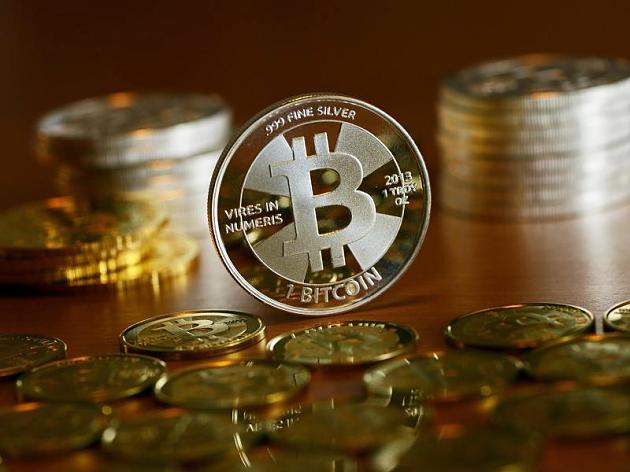Bitcoin is back: What is behind the comeback of the crypto currency?

The Bitcoin price has again risen above 6,900 US dollars. Confidence in the coin, which was once used as a hacker’s currency, is on the rise. The reasons for the price recovery.
The Bitcoin strength pulls the entire crypto market upwards. At the same time, Bitcoin is able to expand its market share further, with a market dominance of over 58 percent. But where does the change in sentiment come from and what are the fundamental reasons for further price increases?
The potential of institutional investors entering the crypto market has often been written and discussed. Quite a few can no longer hear the inflationary mantra that big money comes with institutional investors. But that doesn’t change the fact that this statement is true. The big money is in the hands of pension funds, family offices and investment houses.
The Bitcoin Trading Desk of Fidelity, a billion-dollar asset management company based in Boston, fits in well with this narrative. In addition to the existing crypto custody service, the crypto trading service for key accounts will be launched in the coming weeks. Such news contribute to the new crypto-optimism, even if they only represent a small piece of the puzzle at the end.
I’d love to forget: Bitcoin as an escape currency
It can still be observed that Bitcoin tends to react positively to major economic policy turbulences. In addition to gold and traditional currencies such as the Swiss franc, Bitcoin is also enjoying an influx of investors in need of security and worried about inflation. After all, crypto currencies can play off their advantages as an independent asset class that is relatively uncorrelated to the traditional financial sector. Neither the expansive central bank policy of an ECB nor sanctions against national economies or impending trade wars threaten Bitcoin’s value stability. The crypto admixture in Bitcoin’s own asset portfolio is correspondingly obvious.
For example, the current trade dispute between the USA and China is an example of subliminal uncertainty in the markets. Cyclical stocks such as automobile stocks in particular are suffering as a result. On the other hand, countercyclical stocks such as gold or, increasingly, Bitcoin can benefit from economic conflicts. The same applies to the economic sanctions in the dispute over the Iranian nuclear treaty. So this week the European states rejected the 60-day ultimatum set by Tehran – one reason less for investments in the DAX, one reason more for Bitcoin and Co.
The Internet giants are slowly showing where the journey is heading
Which companies have the greatest influence on the crypto market? One may be inclined to say Binance, Coinbase or ConsenSys, but that is only partially true. After all, the largest companies in the world, or those with the largest customer base in the world, now want to switch to blockchain and crypto currencies. Although their concepts are far removed from the decentralized Bitcoin, they can still promote the Bitcoin adaptation more broadly than the crypto companies mentioned. The fact that Facebook will soon be releasing its own crypto currency and is announcing this week that it is easing the crypto advertising ban in line with this are extremely positive signals for the crypto market.
After all, Bitcoin and Co. also benefit when hundreds of millions of people get in touch with the crypto economy through Facebook. In the last few weeks, rumours have also been circulating that Samsung – having already launched a crypto-compatible smartphone with the Samsung Galaxy S10 smartphone – is also working on its own coin. Owners of the new smartphone can already look forward to apps and an Ether Wallet. The announcement of such crypto-affine corporate messages shows where the journey is headed.
Just a few dents: Binance hack and tether debacle cause only minor damage
Of course, there are also enough negative headlines in the crypto sector. This week, for example, hackers hacked the world’s largest crypto exchange, Binance, and made it around 40 million US dollars easier. Even greater than the damage caused by 7,000 stolen Bitcoins is the loss of confidence in the entire ecosystem. Although stock market hacks are the order of the day, many hoped that the chalice would pass Binance by. The crypto prices reacted accordingly with red signs when the news hit at the beginning of the week. Nevertheless, a bad crash looks different. Bitcoin and Co. recovered above average from the news.
Prices were also resilient in the negative headlines on Tether and Bitfinex at the end of April. Tether and Bitfinex were repeatedly accused of covering up liquidity bottlenecks of up to USD 850 million. Even this negative news could not really impress the market. It seems that the crypto market is in a relatively strong phase where negative headlines can be particularly well absorbed. Nevertheless, traders should not forget that a not inconsiderable part of the trading volume is generated by wash trading. Specifically, some crypto exchanges fake volumes to pretend liquidity. A problem that continues to weigh on the crypto market.
Security Token and Initial Exchange Offerings as a promise of salvation
Issuing tokens as officially recognised securities, i.e. issuing a share or bond in the form of a token, brings new momentum and above all new money into the crypto market. The more serious way of financing crypto and non-crypto projects in many respects also provides positive impetus. The new financing in the crypto ecosystem promises nothing less than the transformation from physical securities certificates to digital tokens. Even the Federal Financial Supervisory Authority (BaFin) has admitted that it is likely that in future securities will be securitised as digital tokens by default.
In addition to security tokens and security token offerings (STOs), it is also the Initial Exchange Offerings (IEOs) that are also flushing new capital into the market. Token sales at IEOs take place via crypto exchanges such as Binance or Bittrex, promising better investor protection and user-friendliness than was the case with ICOs in the past.
The challenges remain
Hardly anyone wants to know anything more about the bear market and the burned ICOs from 2018. The current trend in the crypto-ecosystem is determined by the increasing professionalisation and regulation. The new optimism is also reflected in the increased transaction volume of Bitcoin and Ethereum, which is higher than it has been for several months. dApps even broke a new all-time high. All the more important, therefore, is the issue of scaling. As Ethereum co-founder Joseph Lubin recently admitted, Ethereum in particular must put a lot of pressure on the tube. Currently, despite good progress, scaling solutions are still too far away.
The same goes for Bitcoin and the Lightning Network. Although there has been good progress – now it can also be used via the Apple Watch Lightning – there is still no breakthrough. A lack of progress in scaling can therefore be identified as an obstacle to crypto courses. Also, the many new projects that are financed via STO or IEO have yet to prove themselves. Despite higher standards, some rotten eggs can be expected – so a lot of money will continue to be burned in the crypto market. As long as there are visible project successes, however, this is not a bad thing, but completely normal. Conversely, lighthouse projects and success stories have the potential to give the entire crypto market a new dynamic and attraction.

